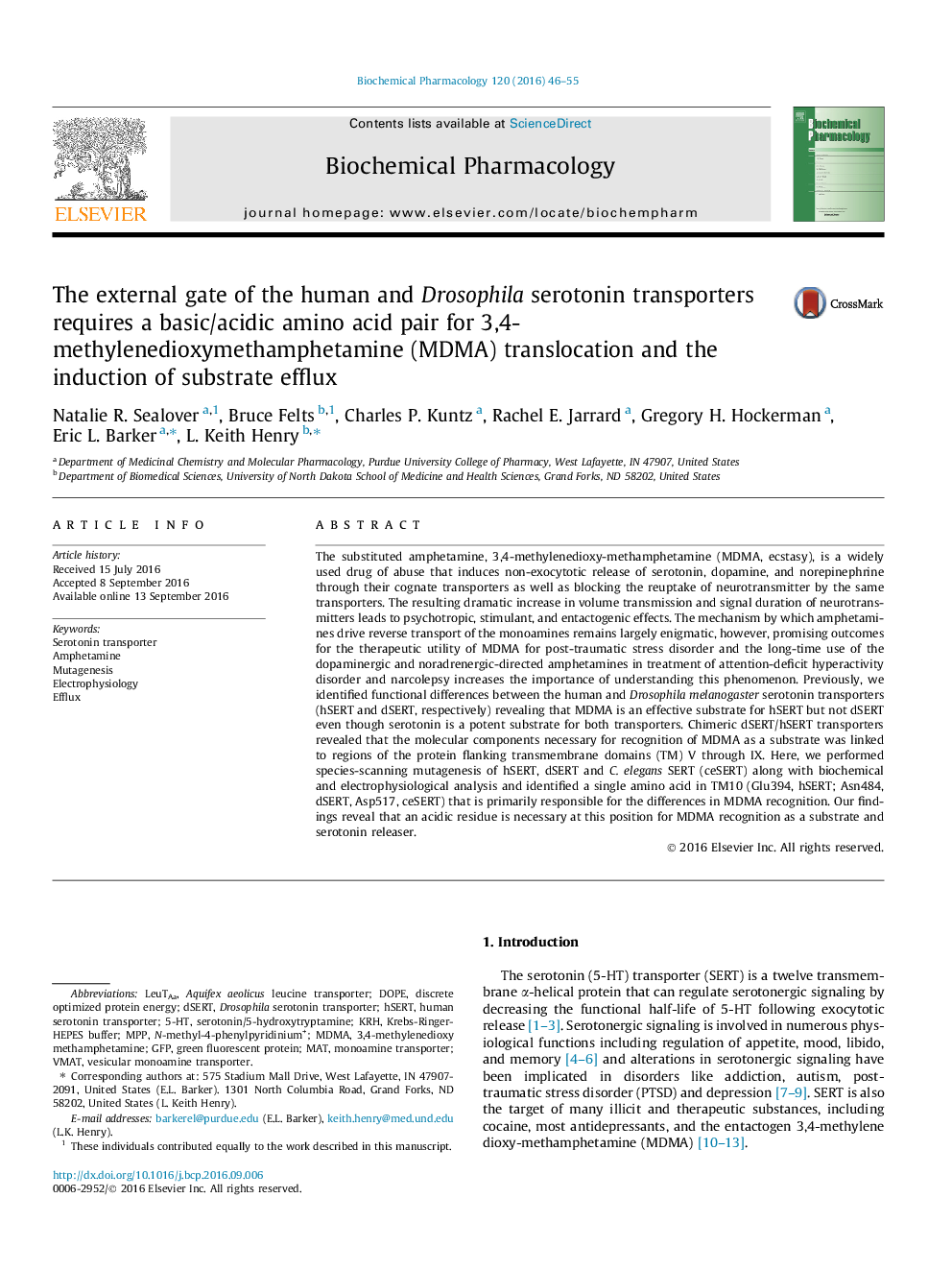| کد مقاله | کد نشریه | سال انتشار | مقاله انگلیسی | نسخه تمام متن |
|---|---|---|---|---|
| 5552276 | 1557893 | 2016 | 10 صفحه PDF | دانلود رایگان |

The substituted amphetamine, 3,4-methylenedioxy-methamphetamine (MDMA, ecstasy), is a widely used drug of abuse that induces non-exocytotic release of serotonin, dopamine, and norepinephrine through their cognate transporters as well as blocking the reuptake of neurotransmitter by the same transporters. The resulting dramatic increase in volume transmission and signal duration of neurotransmitters leads to psychotropic, stimulant, and entactogenic effects. The mechanism by which amphetamines drive reverse transport of the monoamines remains largely enigmatic, however, promising outcomes for the therapeutic utility of MDMA for post-traumatic stress disorder and the long-time use of the dopaminergic and noradrenergic-directed amphetamines in treatment of attention-deficit hyperactivity disorder and narcolepsy increases the importance of understanding this phenomenon. Previously, we identified functional differences between the human and Drosophila melanogaster serotonin transporters (hSERT and dSERT, respectively) revealing that MDMA is an effective substrate for hSERT but not dSERT even though serotonin is a potent substrate for both transporters. Chimeric dSERT/hSERT transporters revealed that the molecular components necessary for recognition of MDMA as a substrate was linked to regions of the protein flanking transmembrane domains (TM) V through IX. Here, we performed species-scanning mutagenesis of hSERT, dSERT and C. elegans SERT (ceSERT) along with biochemical and electrophysiological analysis and identified a single amino acid in TM10 (Glu394, hSERT; Asn484, dSERT, Asp517, ceSERT) that is primarily responsible for the differences in MDMA recognition. Our findings reveal that an acidic residue is necessary at this position for MDMA recognition as a substrate and serotonin releaser.
Journal: Biochemical Pharmacology - Volume 120, 15 November 2016, Pages 46-55